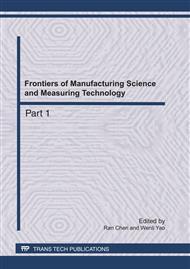p.1231
p.1236
p.1242
p.1250
p.1255
p.1260
p.1264
p.1269
p.1274
Mathematical Model for Multi-Component Forces and Torque Determination in Friction Stir Welding
Abstract:
Major works concentrated on the energy conversion from mechanical friction work to heat; emphasized on the immediate contact surface of work material and rotating welding tool but with no in-depth analytical study to relate the loads that are transferred to the work material and the welding fixture especially at early stage of heat generation. In this work, a mathematical model is developed to predict three-dimensional force components and axial torque of the rotating tool based on contact mechanic principle in relation to Al6061 temperature-dependent material properties. The model shows the ability to be possibly adapted for different metallic material and physical properties. It suggests the exerted torque and loads calculation endured by work material involving friction and shear mechanism of two static-dynamic contacting surface; rotating rotational tool and the fixed work material, to be used as one of the option for optimization of the welding process such as to determine the ratio of slip, non-slip contact condition through comparisons of experimental and computer simulation on the Friction Stir Welding process.
Info:
Periodical:
Pages:
1255-1259
Citation:
Online since:
May 2011
Authors:
Keywords:
Price:
Сopyright:
© 2011 Trans Tech Publications Ltd. All Rights Reserved
Share:
Citation:


